The 17 new condos in the contemporary Mission District development at 3500 19th Street hit the market in late 2013 priced at over $1,000 per square foot, including the two-bedroom unit #206 which was priced at $1,879,000 or roughly $1,208 per foot.
Subsequently reduced to $1,799,000, a few days before it went pending on the MLS, the sale of the 1,556-square-foot unit closed escrow for an “over asking” price of $1,800,000 ($1,157 per square foot) in March of 2014.
A month ago, 3500 19th Street #206 returned to the market listed for $1,849,000.
And after 43 days on the market, the two-bedroom, two-and-a-half-bathroom unit, “with an expansive open floor plan facing 19th [Street],” high-end finishes, and a private deck overlooking the building’s courtyard has been reduced to $1,749,000 or $1,124 per square foot.
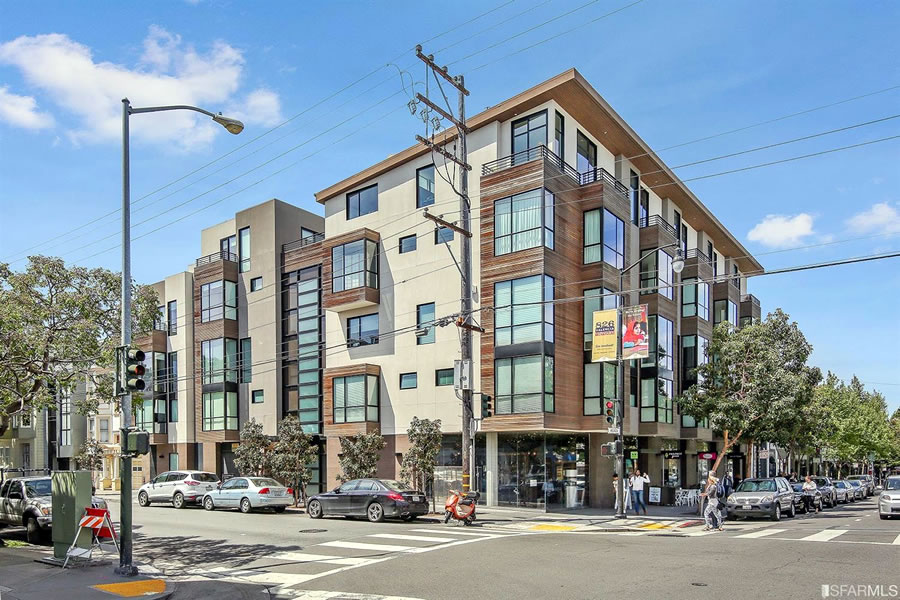


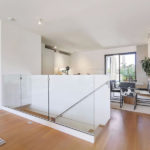
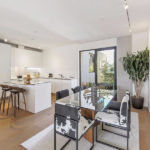




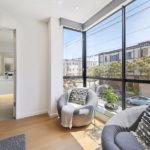
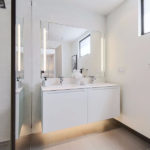
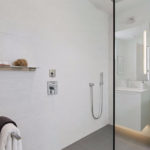
So, from ridiculously expensive to ridiculously expensive?
Not that ridiculous if you ride the wave up and get a nice chunk of appreciation. Truly ridiculously expensive if you get in at the top and get dragged all the way down.
Which is exactly what a lot of folks did back in 2007 before the market tanked. They got dragged down.
Well you gotta spend money to make money!
sorry, but 19th street is like ghetto for 1.7 mil; i know rich people are stupid; but, i don’t know if they’re that stupid. you gotta be so wealthy 1.7 feels like $20
“ghetto”? 19th and Valencia is the heart of the gentrified Mission. A block from Tartine, Delfina, Bi-Rite, etc., etc, etc., etc. It is a generic cheap looking condo for 1.7 mil without even considering what the HOA fees might be, but the neighborhood is anything but ghetto.
This area west of Mission has always been on the high end given it’s proximity to Dolores Park and the Valencia strip.
@ Brisket – there is a about one tent per block in the Mission & crime crime crime, and yet it costs a premium. I’ve said it once, and i’ll say it again – the whole point of the Mission is that it was cheap.
How many more of these condos reselling at a loss stories is it gonna take before it hits home that maybe yeah SFHs are better investments? This may have been overpriced to begin with but I would find it hard to believe that a comparably priced SFH bought in late 2013 would not be easily selling for a gain today. Certainly not a loss. You can say what you want but this is fact: they are making a lot of condos with each passing day (increased supply) whereas SFHs are not being made for the most part (stagnant supply). Demand curve is as nuts as ever. What did you learn in Econ 1, people?
Time will tell if the weakness in the condo market is an early indicator of things to come or if SFH’s will decouple from the condo market.
But it does take time for the new market reality to percolate though the general buying public. That’s why RE markets are so slow to turn. The changing tone of the condo market is obvious from following the data, but most people don’t follow the RE market day to day. Someone full of blissful ignorance could walk in tomorrow and overbid this place as if it were 2015. But as time goes on, there will be fewer and fewer of these buyers stuck in the past.
Individual data points tell us nothing, obviously.
It’s the aggregate data that has value.
we’re on the down-side; right after the peak; if you’re holding, you’ll be fold’n
Obviously. And while Bay Area Home Sales Slipped to a six-year low in April, with San Francisco recording the only year-over-year decline in terms of the median sale price, New Condo Sales and Pricing [have dropped] in San Francisco, at least in the aggregate.
Point is one can always cherry pick anecdotes, but that does not necessarily represent any trend. 1225 Shrader, for example, just closed at $1,650,000, up from $1,070,000 in June 2015, with permits only showing some bathroom work and (maybe) some unpermitted kitchen work. Call it a conservative 40% gain in two years. We saw a similar gain with 2006 Washington #8. Not saying that is consistent with the trend, but neither is any other cherry picked example.
May MLS numbers show YOY sales up, inventory down considerably – esp. for condos, days on market way down, and prices up on both a median and $/sf basis. Inventory picked up last fall and prices plateaued. That all reversed a couple months ago with inventory dropping (notice you haven’t seen any recent SS postings on low inventory levels, just links to old postings). Demand remains pretty high while supply has tightened. Bargains are few and far between even if one can spot the rare example where something is selling for less than a year or two ago. Prices may ease, but not happening yet in any material way. I know a lot of people really, really want to say “I called it!” but can’t say it yet.
It’s good to know that a unit that had been a TIC would be worth more after being condo converted and remodeled!
And your understanding of the sale history for 2006 Washington Street #8, which just traded hands for $22 million in Pacific Heights (great indicator for a two-bedroom condo in the Mission, by the way), is completely wrong.
But these are great examples of the ease with which rotten apples can be picked and paraded, and just how easily people can get confused or be misled.
Now back to the market in the Mission and condo at hand. And in terms of inventory levels, be sure to plug in next week to see what’s really going on.
A big factor is also the illegal in-law unit boom. Two or even three in-law units per house are not uncommon for parts of the city.
Basically a slight loss over the 3 plus years since the original sale. The irrational exuberance which fueled much of the price gains in 2014/2015 is gone.
This is a bit different from the new condo price drops as, so far, older condos seem to have held their price. This could be a harbinger of price drops in the non-new/not recently coined condo market.
As it sinks in that the big appreciation days are over for perhaps quite a while I suspect buyers are looking more closely at just exactly what 1.749 million, in this case, is getting them. In SF that isn’t much – for the same price one can purchase a nice home in the Peninsula Hills with a view and some space – certainly more than just a deck overlooking an internal courtyard.
That it comes with no deeded parking (at this price point) is maybe why it won’t sell.
Don’t you know? Owners will bike to work because it’s the Mission after all.
SFHs in my area of the Sunset are going for well over a million, with many of these homes untouched since they were built back in 1940. So, figure another couple hundred thousand in upgrades (add a 3rd bedroom and extra bath), or like the home around the corner from me, gut the sucker, design it to look like a cheap IKEA knock off store and put it on the market for $1.4M. Took several months, but it finally sold.
That’s certainly something to consider. But of course, its 2014-era sale at $1.8 million was sans a deeded parking spot as well.
i know this is the price people are paying, but i will never understand. I bought a 3 bdr 1800sq ft condo in inner inner richmond 4 years ago for 1,000/sqft to live in the mission, and without parking (or storage) to boot.
Build more housing and the market moves toward equilibrium unless demand makes up for it. Isn’t that what everyone has been asking for? This is not “weakness”, it is just supply moving closer to demand, IMO.
I think the demand is just as strong as before, but wallets are tighter and knee jerk reactions to buy are fewer. It reaches a point of ridiculous when even those who are can afford a $1.8 2BD condo in the Mission step back and say “I think it’s too much.” We know a buying panic drives up prices. I think people are more level-headed these days.
The demand for affordable housing is surely as strong as ever. The problem is that the SF affordability index is near an historic low. These condos and such were never affordable to most residents and as such one needs to look at this as a sub-market. One made up of very high paid workers. It’s that segment that is not buying at these prices – for a number of reasons. If anything they are shifting their home purchases to the counties surrounding counties where appreciation and sales are stronger than in SF.
Your S&D curve only works with fungible market segments. How does building more 1BR luxury condos with no parking make middle class family housing more affordable?
Because high income people are presently occupying middle class housing and pricing out the middle class.
So, build more middle class housing. That way, we don’t wind up with a glut in one market segment.
You can’t build more middle class housing in SF because it’s the land value that makes up the bulk of the home value. You can build shoebox micro-units but those don’t appeal to most people. You can build in less desirable neighborhoods, but that only makes them more desirable. Time to face facts, SF housing is a luxury item, with current prices driven as much by liquidity as supply and demand. As long as the Everything Bubble persists, the middle class will need to look elsewhere.
(What Sabbie means is that as long as the Bay Area economy stays strong, prices will not significantly drop. Making land use plans around the expectation of such a drop is a mistake)
Actually, I think you just argued for weakening demand. When people “step back and say, ‘I think it’s too much'”, that is weakening demand. Couple weakening demand with increasing supply, and you have a softening of prices.
I have long believed that San Francisco is generally a superb place to buy a home that will appreciate handsomely, under certain conditions. Starting in the 1970’s when the 1st wave of price appreciation swept the city, then again in the 80’s, 90’s 2000’s etc.
There are periods when prices are depressed (the ’89 quake all the way through the 90-91 recession and the worst days of the AIDS crisis hit housing prices, the out migration when we lost our status as a West Coast finance and advertising hub, the dotcom bust, the great recession and now the glut of new condos coming online — all have created flat periods) but what I have seen is a weird parallel trajectory to Manhattan pricing, just at a continuous discount, AKA we appreciate like Manhattan but are always a bargain compared to New York when you consider earning opportunities here especially in tech, bio-sciences, etc. Not to mention our superior climate.
Condo’s in expensive buildings are often an exception however, as their high dues drag down your net gain. But from what I have observed (and I have observed a lot) over the past 20 years, just as one snapshot, is this rough formula: a monthly (net of interest and overhead) average appreciation of $1000 for every $100,000 in original purchase price. There are provisos: neighborhood, single family versus mutli-family, condo conversion versus TIC, etc. But over and over again I have seen valuations tick up handsomely over the long term in this city if one buys the right place in the right area and stays in it over the long haul. Like Manhattan, we just keep going up.
This is the whole point of building new housing stock. It depresses the value of the existing housing stock, or if done slowly, keeps it from rising. Every new apartment on the market competes with last year’s new apartments and the year before that. If we would only build more prices would go down!
Wrong. Studies have shown that building new housing in older neighborhoods, like the Mission for example, actually drives up the prices of all housing stock, because it increases the appeal of the area (gentrification).
Agreed. This is a really spacious unit in a great location but no parking is a deal breaker for many.
Second floor is a deal breaker for many. No view and loud.
It’s technically the 2nd & 3rd floors. Great opportunity to waive at passersby! It is unusual that the entry for this particular unit is on the lower level with the bedrooms, though.
UPDATE: Purchased for $1.8 million in early 2014, the list price for 3500 19th Street #206 has been reduced to $1,699,000.
UPDATE: Contemporary Mission Condo Fails to Fetch 2014 Price